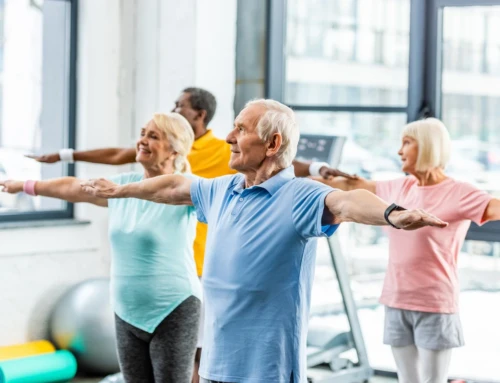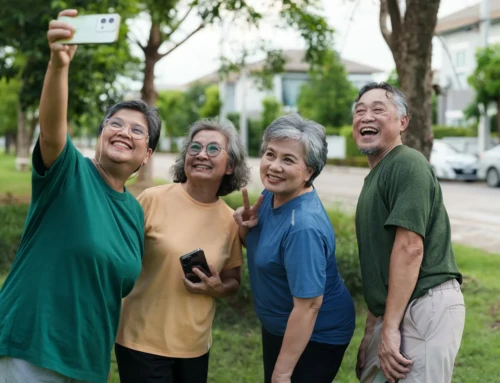
From Isolation to Connection: How Senior Living Restores Social Wellbeing
It’s not always easy to spot the quiet shift from living independently to living in isolation. For older adults—especially those who live alone—days can start to feel repetitive, routines fade, and opportunities for meaningful conversation become rare.
That’s why the social benefits of senior living go far beyond entertainment. They offer a steady rhythm of connection that supports emotional and cognitive health—and brings back something many people didn’t realize they were missing: daily community.
Why Is Social Wellbeing So Important for Older Adults?
Social connection isn’t just “nice to have,” it’s tied to how we think, feel, and function.
According to PMC, prolonged isolation in older adults can lead to:
- A 49-60% increased risk of dementia
- Higher rates of depression and anxiety
- Elevated risks for heart disease and stroke
In contrast, regular interaction, whether a conversation over breakfast or attending a music group, can support better emotional well-being, increase cognitive stimulation, and even help older adults stay more physically active.
How Can I Tell if My Loved One Is Socially Isolated?
You might notice a few subtle signs:
- They’re spending more time alone
- They’ve lost interest in hobbies or social events
- They seem quieter or more withdrawn on phone calls
- They no longer leave the house as much
- Their mood, memory, or appetite has changed
Loneliness doesn’t always look dramatic; it can be quiet and gradual. But it’s important to pay attention. Early signs of isolation often lead to more serious health concerns if not addressed.
What Are the Social Benefits of Senior Living Communities?
Senior living communities are designed around connection. Even if someone is more introverted or hesitant to join activities, the daily structure naturally creates engagement opportunities.
Key social benefits include:
- Shared dining rooms for meals and conversation
- Group activities such as games, crafts, or fitness classes
- Outings to local events, parks, or restaurants
- Informal chats with neighbors and team members throughout the day
There’s no pressure to participate in everything, but simply being around others makes it easier to find companionship, even in small moments.
How Does Connection Support Emotional and Brain Health?
Reports found that social isolation is associated with a 29% increased risk of heart disease and a 32% increased risk of stroke.
Being part of a community can help:
- Boost memory and cognitive function through conversation and stimulation
- Improve sleep, appetite, and mood
- Reduce anxiety and feelings of sadness or restlessness
In a community setting, residents often find they laugh more, talk more, and even regain confidence over time.
What Types of Connections Happen in Senior Living?
Connection doesn’t have to mean large gatherings or big events. It’s often the small things that make the biggest impact.
You might see:
- A resident sitting with a new friend over lunch
- A team member greeting someone by name during morning rounds
- Neighbors exchanging kind words during a walk
- Someone discovering they still love painting or poetry after all these years
These moments matter. They bring a sense of rhythm, routine, and relationship, things that are often hard to find when living alone.
Do Families Notice a Change After a Move?
Yes. Families often share that after their loved one moves into a community, they notice:
- A brighter tone in their voice
- More stories being shared
- A willingness to engage again—at their own pace
For some, these changes take time, while for others, they happen quickly. The important thing is that the environment supports both comfort and possibility.
How Does Pioneer Village Support Social Wellbeing?
Each senior living community is unique, but what they often have in common is a commitment to routines that bring people together while still respecting each individual’s pace and personality.
Pioneer Village in Jacksonville, Oregon, offers Independent Living and Assisted Living where connection, comfort, and community are part of everyday life.
Whether it’s a shared meal, a friendly conversation, or a creative activity, these small moments help transform isolation into connection.
FAQs
1. What are the social benefits of senior living?
Senior living communities offer structured opportunities for connection through shared meals, group activities, and daily interaction—reducing isolation and promoting emotional and cognitive health.
2. How does senior living help with loneliness?
Living in a community helps older adults form friendships, join in on social events, and feel more supported through regular, everyday contact.
3. Can senior living improve mental health in older adults?
Yes. Social interaction in senior living has been linked to better mood, improved memory, and lower risk of anxiety and depression.
4. What kinds of social activities do senior living communities offer?
Common activities include fitness classes, crafts, book clubs, games, group outings, music, and casual get-togethers.
5. Do all residents have to participate in social events?
No. Participation is always voluntary. Residents can engage on their terms, but opportunities are built into each day naturally.



